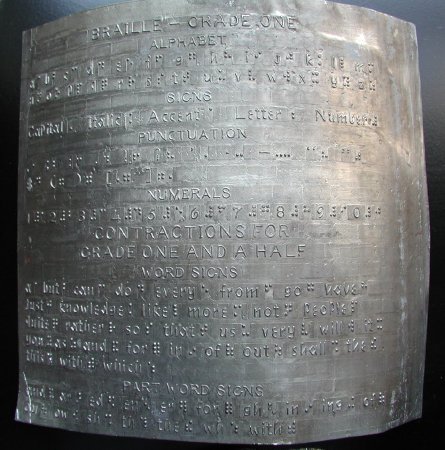Object ID:
1992.314.6a-d
Title:
Grade One Braille embossing plates
Description:
4 embossing plates, produced from hand set type pressed into foil and mounted on a sheet of tinplate; (a) Braille Grade One alphabet, signs, punctuation, and numbers and Grade 1 1/2 word signs and part word signs.
Dimensions:
H-9.25 W-10.5 inches
Date:
ca. 1917
Made by:
American Printing House for the Blind
Place of Origin:
Louisville, KY
Provenance:
1885 Annual Report: "The unique method of stereotyping, by which is secured a flexible stereotype plate, made of tin foil, amalgamated to a sheet of ordinary roofing tin, is the quickest, and cheapest, and for embossing work the best method in use. The double-cylinder press, made from special designs, prints four pages at every revolution, and will make thirty or more revolutions a minute. The flexible plates adapt themselves to the cylinders without any planing, and the character of the embossing speaks for itself."
APH printed its first alphabet cards for revised braille in 1918. Revised braille was adopted in America in 1917 following the failure of American and British negotiators to adopt a common English braille, a feat not accomplished until 1932.
APH printed its first alphabet cards for revised braille in 1918. Revised braille was adopted in America in 1917 following the failure of American and British negotiators to adopt a common English braille, a feat not accomplished until 1932.
Credit Line:
APH Collection, 1992.314
